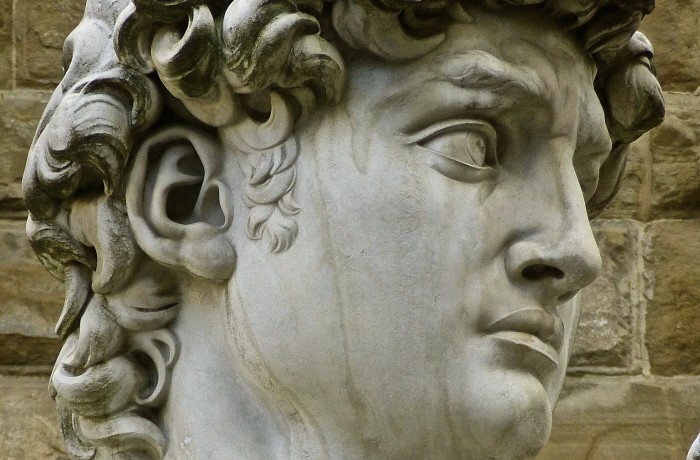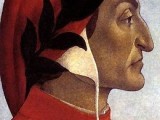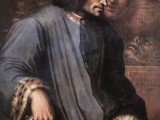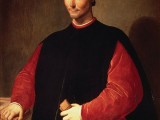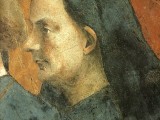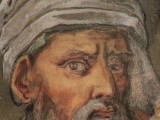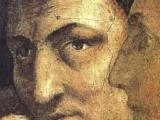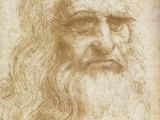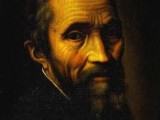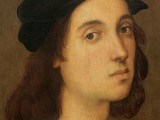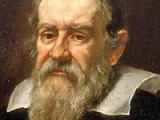DANTE ALIGHIERI
Cathedral Santa Maria del Fiore, Dante’s Stone, Church of Santa Margherita dei Cerchi, Dante’s House, Basilica of Santa Croce e-mail
Dante Alighieri was born between May and June 1265 and was baptized in the Baptistery of St. John.
His most famous work is the Divine Comedy, written in the Florentine vernacular. It is an epic poem divided into three parts: Hell, Purgatory, and Heaven (Inferno, Purgatorio, Paradiso).
On the surface, the poem describes Dante’s imaginary travels through the three realms, but at a deeper level it allegorically represents the soul’s journey towards God.
LORENZO THE MAGNIFICENT AND THE MEDICI FAMILY
Palazzo Medici-Riccardi, the San Lorenzo Complex, Palazzo Vecchio, Palazzo Pitti, and the Boboli Gardens e-mail
Lorenzo de Medici, known as Lorenzo The Magnificent, symbol of the Florentine Renaissance, was born on 1 January, 1449, from Piero de’ Medici and the poetess Lucrezia Tornabuoni.
Upon his father’s death, twenty-year-old Lorenzo had to take on the responsibility of power and of managing the family’s and the city’s wealth.
His politics aimed at making Florence the most prestigious center of art and literature in Italy.
He was called The Magnificent because of his great generosity, due to which he sacrificed a great deal of his inherited assets.
On account of his insightfulness in ensuring peace, although a fragile one, among the various Italian powers he was referred to as “the balance of power”.
He was the author of the elegiac verse on the transientness of youth:
Quant’è bella giovinezza
che si fugge tuttavia!
Chi vuol esser lieto, sia:
del doman non c’è certezza.
The time of youth indeed is sweet,
But all too soon it slips away.
If you’d be happy – don’t delay!
Tomorrow’s ills we’ve yet to meet.
NICOLO’ MACHIAVELLI
Palazzo Vecchio, the Uffizi Portico, the Basilica of Santa Croce e-mail
Niccolò Machiavelli was born in Florence on 3 May, 1469.
When he was 29 he held office in the Florentine Republic as Secretary of the Second Chancery, in a period in which the Medici were out of power. His responsibilities were to write letters and official documents and carry out diplomatic missions.
In 1513, after the Medici had recovered power and he no longer held a position of responsibility, he wrote his masterpiece “The Prince”. This treatise was to become fundamental to political philosophy around the world.
The motto inscribed on his tomb reads “Tanto nomini nullum par elogium” (no praise is suited to a name so great)
BRUNELLESCHI, DONATELLO, AND MASACCIO
Dome of Santa Maria del Fiore, Complex of San Lorenzo, Basilica of Santa Maria Novella, Brancacci Chapel, Bargello Museum e-mail
Filippo Brunelleschi, architect; Bardo Donati, known as Donatello, sculptor; and Tommaso di Ser Giovanni Cassai, known as Masaccio, painter; were respectively born in 1377, 1386, and 1401.
Brunelleschi developed the theory on linear perspective and was the primary designer of the Dome of the Cathedral of Santa Maria del Fiore. He was a friend of Donatello, who applied linear perspective to a relief he carved depicting Saint George fighting against the dragon.
Masaccio too, during his brief artistic career, applied the laws of perspective to his fresco, The Holy Trinity, in which he employed the technique of the vanishing point.
When his friend Brunelleschi heard of his premature death, he said: “Masaccio’s death is for us a great loss”.
LEONARDO DA VINCI, MICHELANGELO BUONARROTI, AND RAFFAELLO SANZIO
Academy of Fine Arts Gallery, Uffizi Gallery, Palatine Gallery e-mail
Leonardo da Vinci was born in Vinci in 1452. Twenty-three years later, 1475, Michelangelo Buonarroti was born in the town of Caprese. Raffaello Sanzio was instead born in Urbino, in 1483.
Leonardo da Vinci was more than a smart young man. He was a genius. Like his predecessors he believed that the job of an artist was to explore the visible world, but that he was to do this in a complete, intense, and accurate manner. It was to be an on-going research, which the artist needed to consider the underlying element of his art. According to Leonardo, the artist was a master who could achieve glory by exploring the mysteries of nature and by seeking out the secret laws of the universe.
Unlike Leonardo, for whom the human figure was only one of the fascinating enigmas of nature, Michelangelo devoted his body and soul to investigating this single subject and succeeded in mastering it fully. Many of the great masters of the 15th century hesitated to introduce the postures of his figures and the angles at which they were depicted for fear of not being able to represent them faithfully. This stimulated Michelangelo’s artistic ambitions and the word soon spread that the young artist’s talent was not only equal to that of the masters of classical antiquity, but had actually surpassed it. He thus became the object of overwhelming admiration, and his movements and plans became as important as a political affair.
Raffaello had neither Leonardo’s extensive culture nor Michelangelo’s boldness. But, while it was a challenge to deal with these two geniuses (seen as unpredictable and cryptic by mere mortals), Raffaello’s gentle nature appealed to influential patrons and his exquisite and devoted manners made him worthy of respect.
GALILEO GALILEI
Science Museum, Basilica of Santa Croce e-mail
Galileo Galilei was born in Pisa in 1564 from Vincenzo Galilei, a Florentine.
After observing the reliefs on the moon, the phases of Venus, and the Medicean satellites of Jupiter through his telescope; in 1609 he illustrated his heliocentric theories.
These theories were deemed heretical by the Church and he was thus sentenced to house arrest. He died alone and almost blind at the age of 78.
On the 400th anniversary of the first astronomical observations made with instruments constructed by Galileo and of the first discoveries made by their employment, the year 2009 was claimed the International Year of Astronomy by Unesco.
Want to know more? Perhaps about local saints, poets, and navigators? Just ask and I’ll be happy to tell you all about them!

